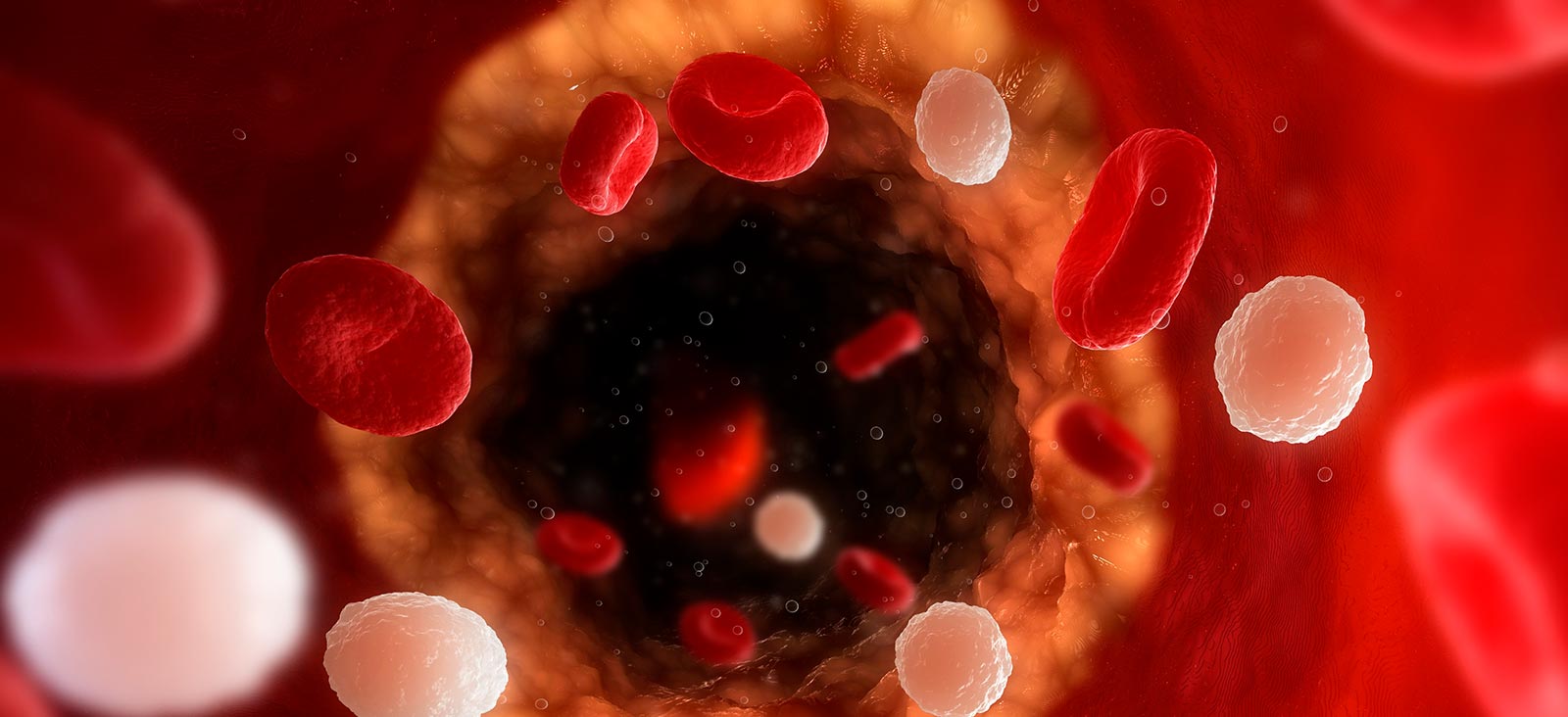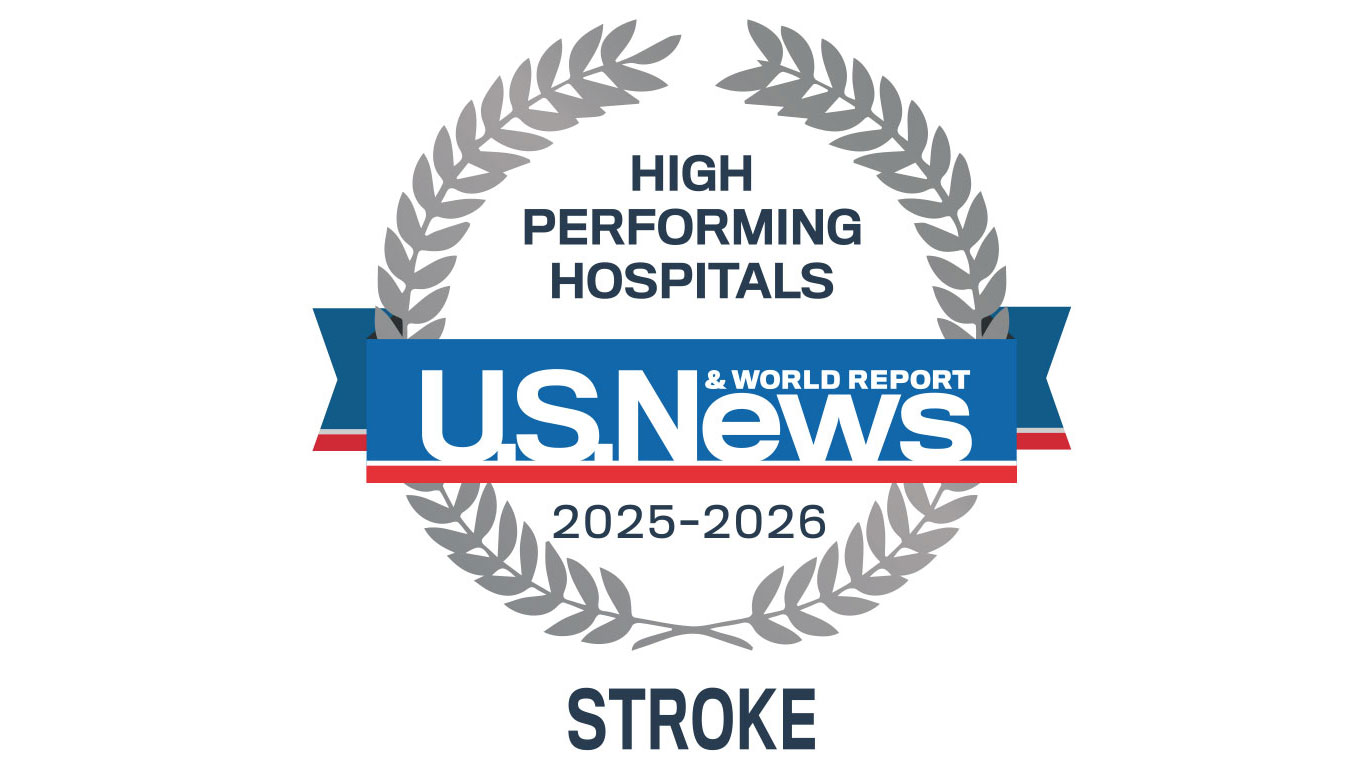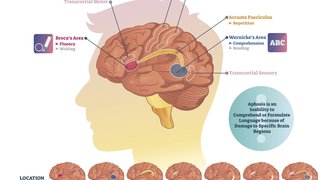Fast, Expert Treatment for Stroke
Hemorrhagic stroke is the result of a blood vessel rupturing and releasing blood into the brain, causing swelling and pressure that damages or kills brain cells. Hemorrhagic stroke is less common than ischemic stroke but accounts for almost half of all stroke deaths.
The causes of hemorrhagic strokes include:
- Arteriovenous malformation (AVM)
- Head trauma
- High blood pressure
- Ruptured aneurysm
- Treatment with blood thinners
Hemorrhagic stroke is usually categorized in one of two ways:
- Intracerebral hemorrhage: Bleeding into the brain, often caused by high blood pressure or vascular malformations of the brain
- Subarachnoid hemorrhage: Bleeding around the brain, often caused by an aneurysm
UT Southwestern’s Robert D. Rogers Advanced Comprehensive Stroke Center is certified by The Joint Commission and the American Heart Association/American Stroke Association. The designation recognizes our team's unique offerings that provide patients with stroke the best possible chance of recovery. Studies consistently show that patients treated at designated stroke centers have lower rates of mortality and morbidity – and better outcomes – than those treated elsewhere.
Neurological surgeons at UT Southwestern have performed more than 2,500 pre-emptive surgeries over the past decade to prevent aneurysm-induced stroke. Our team is among the most experienced in the U.S. with these types of neurosurgical procedures, performing about 250 each year – which is about 15 times more than the baseline requirement for comprehensive stroke centers.
Symptoms of a Hemorrhagic Stroke
A person having a hemorrhagic stroke might experience a range of symptoms that develop suddenly, appear during activity, or come and go.
Brain imaging is the only way to confirm a hemorrhagic stroke, and symptoms include:
- Abnormal eye movements
- Confusion
- Drowsiness
- Headache
- Seizures
Learn more about warning signs of stroke.
Diagnosis
UT Southwestern offers every neurodiagnostic imaging option to identify a stroke, such as:
- Computed tomography (CT) scan and computed tomography angiography (CTA)
- Arteriography
- Cerebral angiogram
- Carotid ultrasonography
- Magnetic resonance angiography (MRA) and magnetic resonance imaging (MRI)
- Echocardiogram
- Transcranial Doppler, an advanced ultrasound technology not available everywhere, which we use to examine blood flow in the brain to help locate the blockage causing the ischemic stroke
Treatment for Hemorrhagic Strokes
Treatment of a hemorrhagic stroke depends on the cause of the bleeding. The first step in treatment is to quickly determine the cause and reduce the pressure caused by the bleeding.
Prompt medical treatment can minimize damage to the brain. While immediate medical attention is critical, some patients experiencing hemorrhagic stroke have as long as 48 to 72 hours when they can still benefit from treatment.
UT Southwestern offers endovascular procedures and surgical treatments to prevent or treat the causes of hemorrhagic stroke.
Endovascular treatment involves the use of a catheter that enters the body through the groin to access the brain arteriovenous malformation (AVM). Our neurointerventional surgeons thread a tiny platinum coil through the catheter and deploy it into the aneurysm, blocking blood flow into the AVM and preventing rupture or re-rupture.
We might recommend a surgical procedure to prevent or stop bleeding or reduce pressure inside the skull. If an aneurysm is the potential cause of the stroke, we can clip it at the base to prevent bleeding before a stroke or to prevent re-bleeding. The availability of both surgical and endovascular options is crucial to give patients the best chance at a successful long-term outcome.
Rehabilitation
What happens after a stroke depends on the magnitude of the stroke and its impact on the body, which can range from mild to severe. UT Southwestern offers a stroke rehabilitation unit dedicated to helping patients regain as much function as possible and manage the permanent impact of a stroke.
Our therapists assist patients who have problems moving their arms or legs, problems speaking or understanding language (aphasia), difficulty swallowing (dysphagia), and other effects of stroke.












